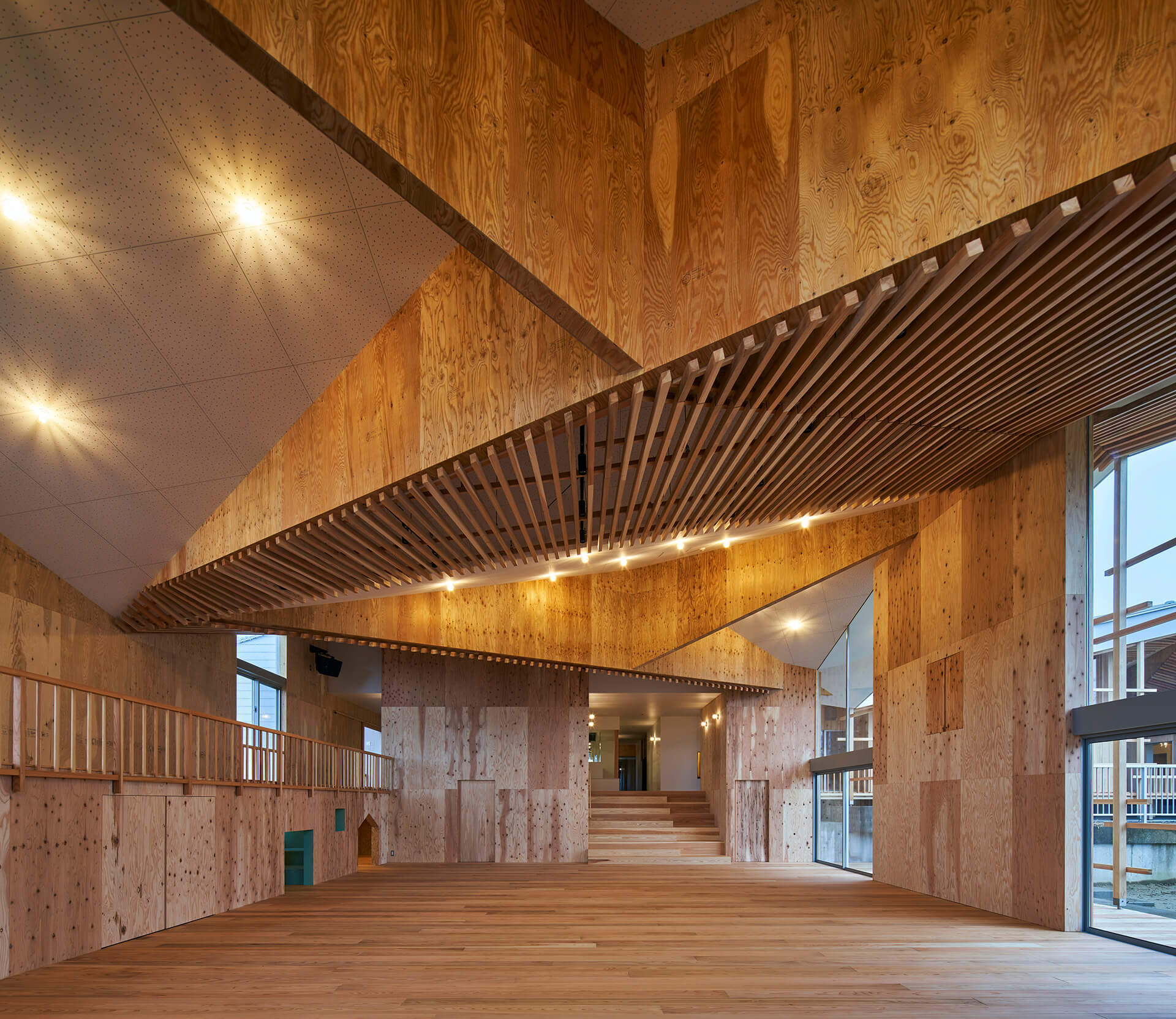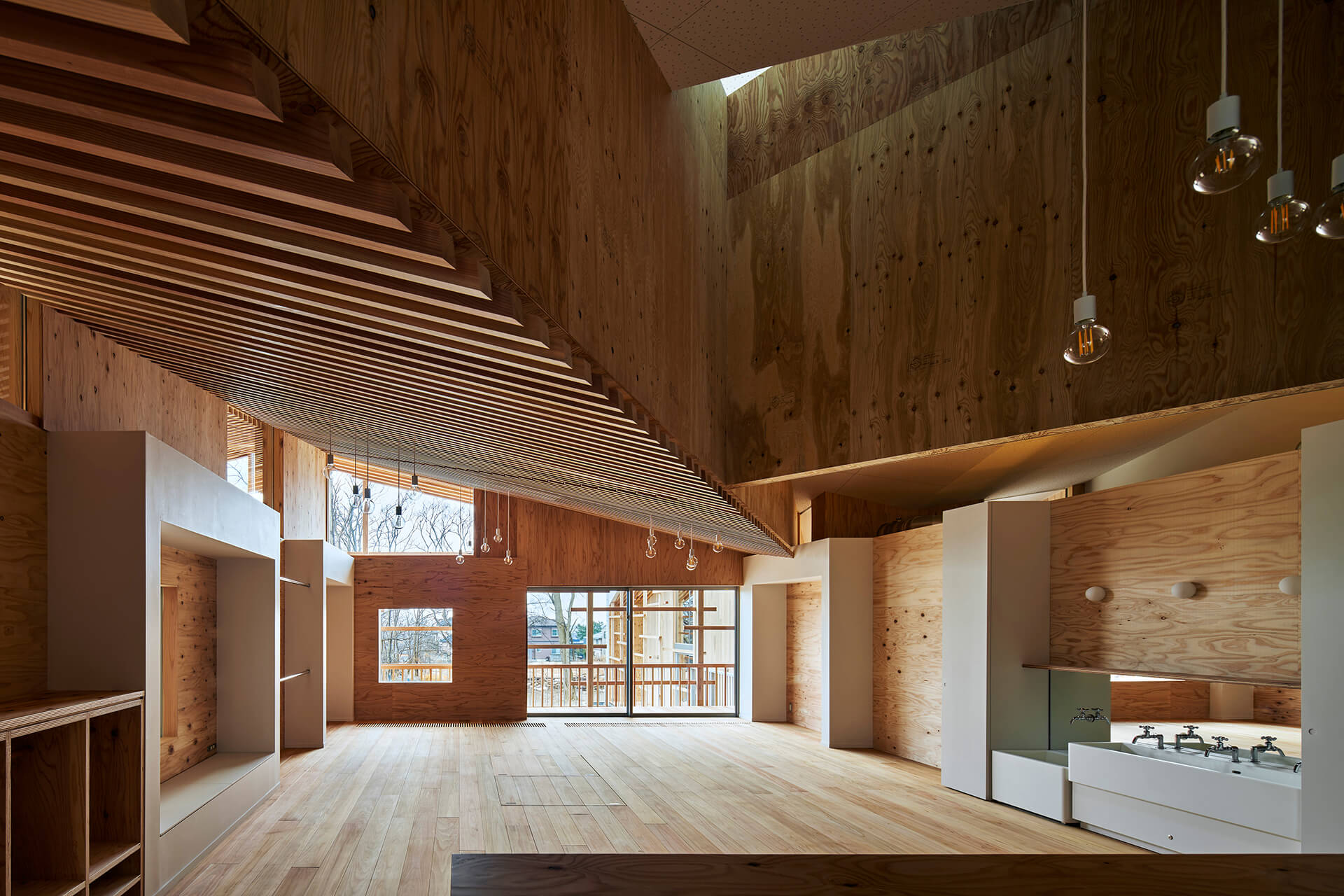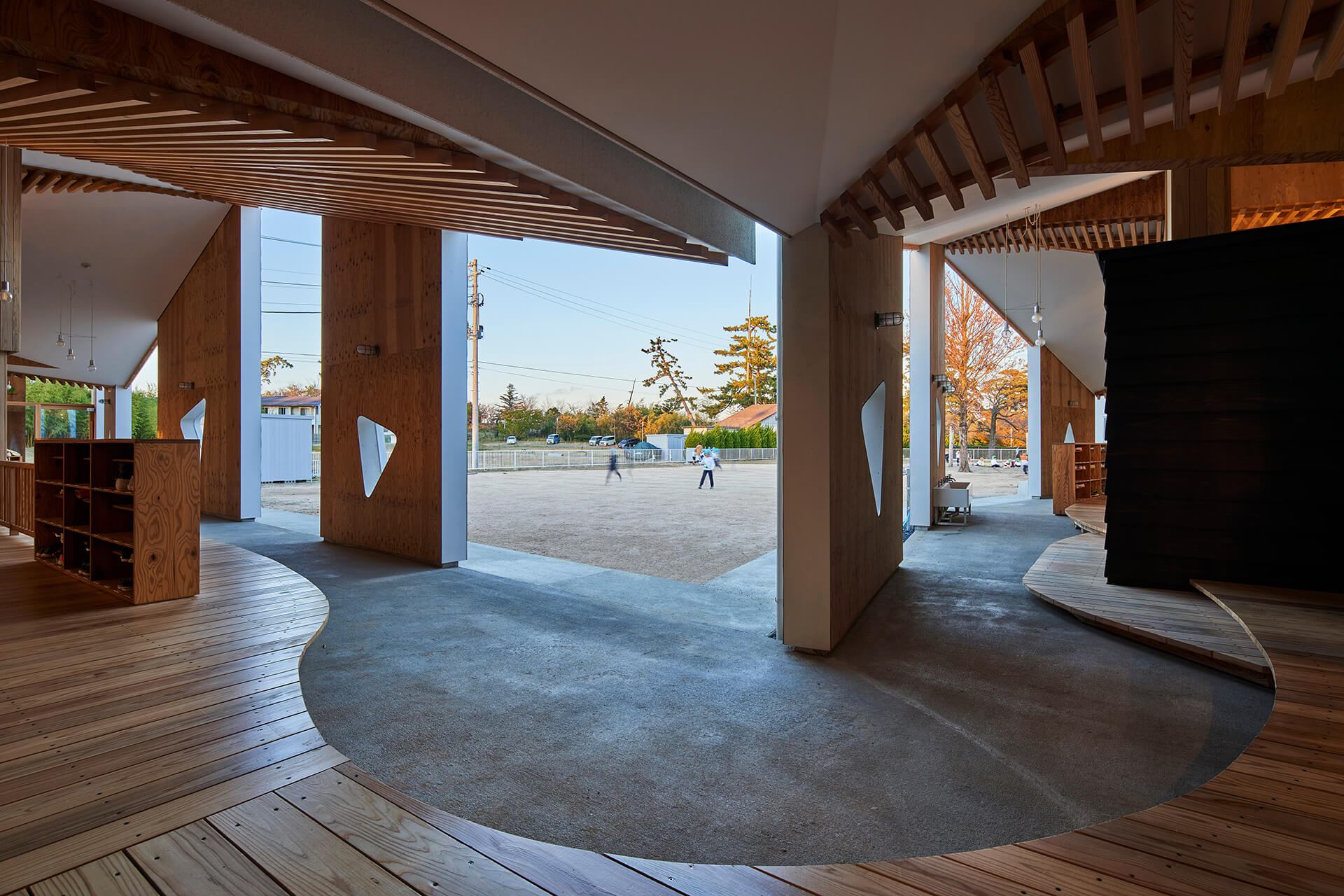Shaping education beyond the norms: The innovative learning spaces of 2023
by Aarthi MohanDec 28, 2023
•make your fridays matter with a well-read weekend
by STIRworldPublished on : Jul 11, 2023
Japanese firm Takeru Shoji Architects has designed a nursery school that embraces the concept of connecting with nature in an authentic way. Situated at the end of a winding pathway atop a sand dune, in Nishi-ku area of Niigata city in Japan, this single-story wooden architecture showcases characterful rooms and recesses, offering an intuitive environment for children.
The project, known as the Yamaikarashi Nursery School, aims to create an expansive childcare environment that extends beyond traditional nursery spaces. The kindergarten design unites the entire surrounding area as a unified entity within the scheme, making the landscape a key part of the learning process. The program establishes a mutually supportive relationship where the entire village actively participates in the school activities, while the program, in return, contributes to the village's revitalisation.
This design resulted from a series of workshops involving childcare researchers, workers, parents, and local residents. With an ageing population and declining birthrate, the participants explored how a nursery school could benefit both children and the nearby village. The vision emerged to create a nursery school that resembled a village and fostered a village-like atmosphere.
The layout facilitates leisurely movement for children between interiors, playgrounds, and the village itself. Furthermore, the school is open to villagers, offering a space for community interaction and blending nursery school activities with broader community engagement.
To overcome restrictions on transporting large timber battens to the site, the Japanese architects combined small timber elements on-site to construct wooden trusses, forming spacious interiors. These trusses, with apexes facing up and down create expressive roof forms. By shifting the truss intersection from the top of the partition walls, each room is designed different from the other. Extensive use of playful surfaces in timber—for walls, flooring, ceiling and furnishing—create a delightfully warm ambience.

The winding and narrow streets characteristic of the village were incorporated into the school design, creating exterior corridors that extend to the rear of the building. This integration ensures the children find a seamless connection to the outdoors.
A childcare support office and a deck plaza situated in front of the building serve as versatile spaces for local farmers' market and food truck events. The deliberate integration of the nursery school with the wider community encourages interaction and creates a vibrant hub for the entire village.
The architects prioritised children's comfort and well-being by installing air conditioners and total heat exchangers under the prefectural cedar flooring. This kindergarten architecture creates an underfloor air chamber that eliminates direct airflow, ensuring a pleasant and conducive environment for learning and playing. Radiant heat permeates the space, providing warmth and comfort for children.

Takeru Shoji Architects believes that designing an "open" environment, where people feel comfortable and at ease, is more significant than the physical structures themselves. The project's goal is to create a large childcare facility that extends beyond the physical confines of the nursery rooms and building.
Since its opening, the Yamaikarashi Nursery has witnessed increased socialisation among children of different age groups, facilitated by the cross-sectional layout of the grounds. Moreover, as children spend more time outdoors, senior citizens walk by the site. This nurturing and flexible school design for children has responded to the desires of all involved.

(Text by Khushi S Tandon, intern at STIRworld )
by Jerry Elengical Oct 08, 2025
An exhibition about a demolished Metabolist icon examines how the relationship between design and lived experience can influence readings of present architectural fragments.
by Anushka Sharma Oct 06, 2025
An exploration of how historic wisdom can enrich contemporary living, the Chinese designer transforms a former Suzhou courtyard into a poetic retreat.
by Bansari Paghdar Sep 25, 2025
Middle East Archive’s photobook Not Here Not There by Charbel AlKhoury features uncanny but surreal visuals of Lebanon amidst instability and political unrest between 2019 and 2021.
by Aarthi Mohan Sep 24, 2025
An exhibition by Ab Rogers at Sir John Soane’s Museum, London, retraced five decades of the celebrated architect’s design tenets that treated buildings as campaigns for change.
 surprise me!
surprise me!
make your fridays matter
SUBSCRIBEEnter your details to sign in
Don’t have an account?
Sign upOr you can sign in with
a single account for all
STIR platforms
All your bookmarks will be available across all your devices.
Stay STIRred
Already have an account?
Sign inOr you can sign up with
Tap on things that interests you.
Select the Conversation Category you would like to watch
Please enter your details and click submit.
Enter the 6-digit code sent at
Verification link sent to check your inbox or spam folder to complete sign up process



by STIRworld | Published on : Jul 11, 2023
What do you think?